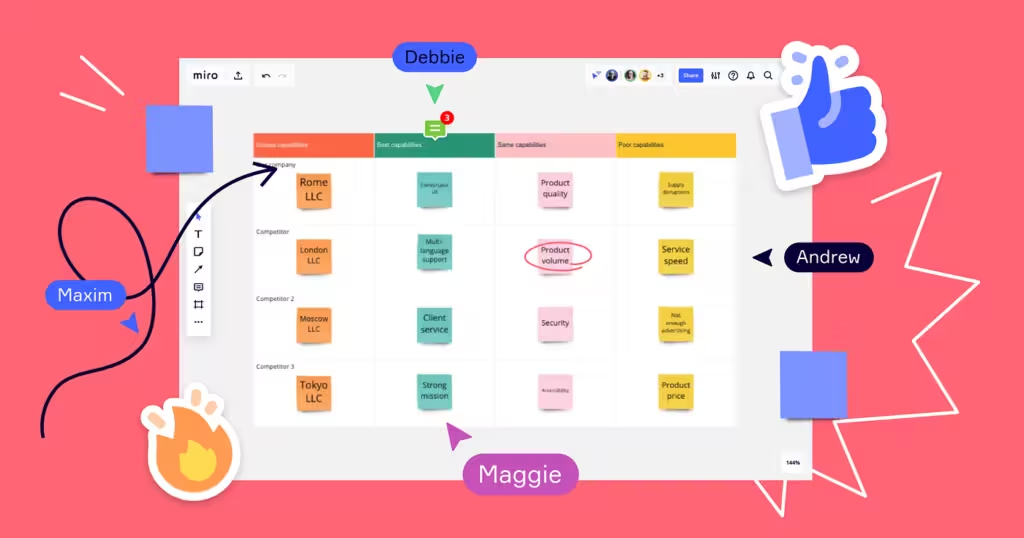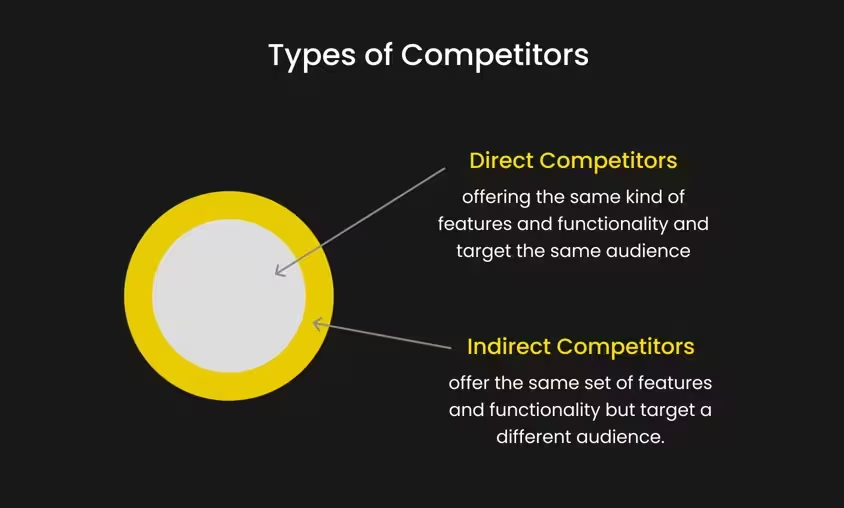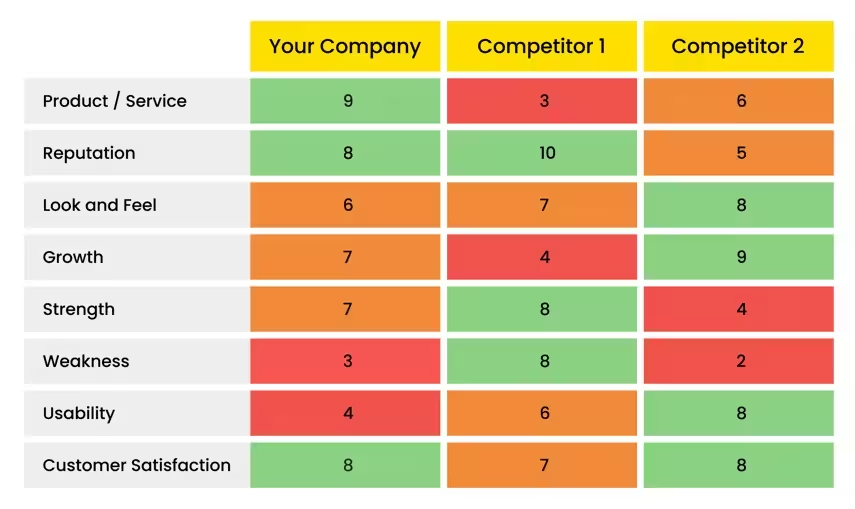
Understanding your competitors is the first step in figuring out how to surpass them. Competitive analysis offers a structured way to gain deeper insights into your rivals. To conduct effective analysis, start by clearly defining your competitors. Utilizing surveys and interviews with potential users can greatly enhance your understanding.
In today’s highly competitive environment, having an advantage over your rivals is crucial for success. To outshine your market competition, you need a comprehensive understanding of their actions, successes, strengths, and weaknesses.
A systematic approach to competitive analysis is essential for gathering valuable information about your competitors. In this post, we’ll explore effective methods for analyzing competitors’ websites to help you gain a competitive edge.
Who Will Be Respondents in Your Website Competitive Analysis?
To conduct an unbiased competitive analysis, selecting the right respondents is crucial. Including your staff may lead to biased insights, so it’s essential to identify your prospective users first; creating user personas can assist in this process.
Your ideal respondents should be customers who have interacted with your competitors, as they can provide valuable insights into those competitors’ strengths and weaknesses. Additionally, former employees of your competitors can offer unique perspectives and insider knowledge.
Consider also including third-party web development and marketing agencies that have worked with your competitors, as they can provide useful insights.
Types of Your Competitors
In the web design and digital marketing sectors, there are two main types of competitors: Direct and Indirect competitors.
Direct Competitors
Direct competitors offer similar features and functionalities, targeting the same audience you aim to reach with your website.
Indirect Competitors
Indirect competitors provide the same functionalities but target a different audience. They address similar issues but with different solutions. Understanding both types of competitors is essential for your analysis.

Prerequisite Tasks for Competitive Analysis
Before diving into competitive analysis, you should complete several prerequisite tasks:
- Set SMART Goals: Ensure your website goals are Specific, Measurable, Attainable, Relevant, and Timely.
- Analyze Current Performance: Assess how your website is performing at the moment.
- Identify High-Value Users (HVUs): Recognize the users that bring the most value to your site.
- Conduct User Interviews: Run guerrilla surveys to understand user preferences and experiences.
- Develop User Personas: Create profiles that represent your ideal users.
- Prepare User Journey Maps: Visualize the steps users take when interacting with your website.
Define Your Competitors
Many people make assumptions about their competitors, which can lead to misleading conclusions. A systematic approach is essential for accurate competitive analysis. Remember, your competitors may change over time as new players enter the market.
Three Methods to Identify Competitors
Survey Prospective Users
Conduct surveys with users who have previously navigated competitors’ websites. Ask questions like:
- How do you research products or services online?
- What keywords do you use in your searches?
- Have you visited websites similar to ours?
- Are there companies you consider instead of us? Why?
- What criteria do you use to evaluate options?
Survey Sales, Marketing, and Account Teams
Your sales and marketing teams interact directly with users and can provide insights into user preferences and evaluation processes. Conducting surveys with these teams can yield valuable information about your competitors.
User Persona Perspective
Step into your user persona’s shoes. Consider the keywords they might use to find your products or services. Determine if they prefer technical or general terms and whether their language is formal or informal. Use tools like Google Suggest to find relevant search terms. Analyze the SERPs to identify competitors listed in the first three pages, providing a solid sample for your competitive analysis.

Prepare and Use a Competitor Analysis Worksheet
The competitor analysis worksheet acts as a heat map, allowing you to rank your website against competitors. As you input data, the cells change color based on the strengths and weaknesses of each competitor’s website.
- Green cells indicate strengths, while red cells signify weaknesses, providing a clear visual representation to inform your strategic development. You can also obtain an average score for each website at the top of the sheet, helping you focus on major competitors to gain an edge.
1. Evaluate Your Competitors’ Strategies
To effectively narrow down your competitors, consider those highlighted by your sales and account teams, as well as those relevant to your user persona. Ask these key questions:
- Does the competitor’s website share similar business objectives?
- Do you target the same user personas or audiences?
- How effective are both websites in guiding users through their journeys?
- How well do both sites achieve their primary objectives?
These questions help refine your list of competitors. If your website scores lower on average, you may need to reassess who your real competitors are.
Additionally, explore these questions to identify gaps in your strategy:
- Are there aspects of your persona that competitors are targeting?
- Have you overlooked significant business objectives that they address?
- Are there innovative strategies employed by competitors that you’re missing?
If you receive “Yes” responses, it indicates potential gaps in your approach. If “No,” you’re in a good position to compete effectively.
2. Gather User Feedback on Competitors’ Websites
Collecting feedback on both your site and competitors can be extensive, requiring a comprehensive questionnaire. Consider offering incentives for participation. While obtaining feedback from B2C prospects may be easier, gathering insights from B2B prospects could be more challenging.
Focus on these four key areas for feedback:
- User Experience
- Creativity
- Technical Aspects
- Marketing Effectiveness
You can find ready-to-use questionnaires online, or utilize services like SurveyMonkey or AYTM (Ask Your Target Market) for streamlined survey distribution and data collection.

Conclusion
Conducting a thorough competitive analysis is essential for understanding your market landscape and refining your strategies. By preparing a competitor analysis worksheet and evaluating competitors’ strategies, you can identify strengths, weaknesses, and potential gaps in your own approach. Gathering user feedback further enriches your insights, allowing you to tailor your offerings to meet user needs more effectively. By following these systematic steps, you can position your website to outperform competitors and achieve your business objectives in a competitive environment.




